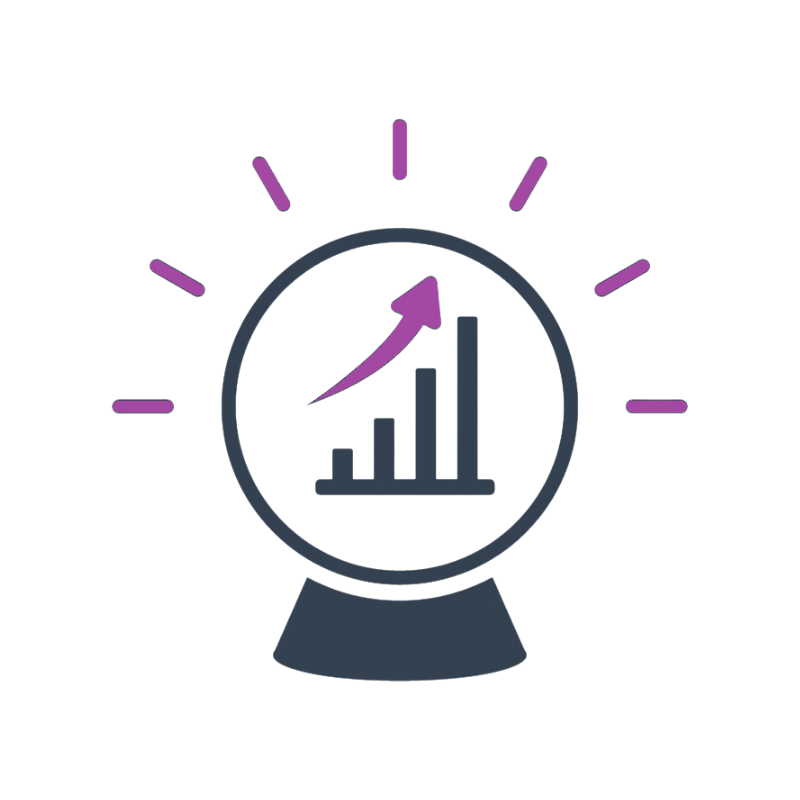Predictive analytics has emerged as a powerful tool that
enables businesses to forecast future outcomes and
trends based on historical data and advanced analytical
techniques, allowing them to make proactive decisions
and allocate resources more efficiently. It involves the
use of data, statistical algorithms, and machine
learning techniques to identify the likelihood of future
outcomes based on historical data. The primary goal of
predictive analytics is to forecast outcomes with a
certain level of probability or confidence.
In this blog post, we will explore the concept of
predictive analytics and how it can be used effectively
to drive business success.
Benefits of Predictive Analytics
Anticipating Future Trends: By analysing
historical data and patterns, predictive analytics helps
forecast future trends, allowing organizations to
prepare for upcoming changes.
Customer Understanding and Personalization:
Predictive analytics helps understand customer
behaviours and preferences, enabling personalized
experiences and tailored marketing strategies.
Proactive Problem Solving: By predicting future
events or trends, organizations can take proactive
measures to mitigate potential issues and optimize
strategies for better outcomes.
Resource Allocation and Optimization: By
accurately forecasting demand and resource needs,
organizations can efficiently allocate resources,
ensuring optimal utilization and cost savings.
Innovative Product Development: By analysing
historical data and market trends, companies can develop
innovative products and services that are more likely to
resonate with customers.

Cost Savings: Predictive analytics can lead to cost
reductions by optimizing inventory management, preventive
maintenance, and workforce planning, among other areas.
Competitive Advantage: Those who harness predictive
analytics gain a competitive edge by staying ahead of market
trends, identifying new opportunities, and outperforming
competitors.
Key aspects of Predictive Analytics
Data Collection and Integration: Gathering
and compiling relevant data from various sources, including
databases, spreadsheets, sensors, and external APIs, into a
centralized and accessible repository.
Data Analysis: Exploring and understanding
data patterns, trends, and relationships through statistical
and visualization techniques.
Exploratory Data Analysis (EDA):
Comprehensive examination of the data's structure, patterns,
correlations, and anomalies, offering insights for feature
selection and modeling.
Feature Engineering and Model Selection:
Identifying and refining relevant features (variables) that
significantly impact the predictive model's performance.
Model Building: Selecting appropriate
algorithms and methods to build predictive models that
generalize well to unseen data.
Training and Evolution: Optimizing model
parameters using training data to achieve the best
predictive performance and assessing the model's performance
and accuracy using evaluation metrics and fine-tuning the
model as needed.
Deployment and Integration: Integrate the
predictive model into the existing business processes and
systems so that it can leverage data patterns for future
predictions on new, incoming data.
Monitoring and Maintenance: Continuously
monitoring the model's performance in the production
environment, identifying drift or degradation in
performance, and updating the model as needed with new data
or recalibration.
Ethical considerations: Adhering to ethical
and legal considerations regarding data usage, fairness,
bias mitigation, and privacy, ensuring responsible
predictive analytics practices.
Business Impact Analysis: Evaluating the
impact of predictive analytics on business goals and
outcomes and iterating the process to achieve better
results.
Issues and Challenges faced in Predictive Analytics
Data Quality and Quantity: Insufficient or
poor-quality data can significantly affect the accuracy and
reliability of predictive models. Missing values,
inconsistencies, inaccuracies, and noisy data can lead to
incorrect predictions.
Scalability and Speed: Processing large
volumes of data efficiently and quickly to build and deploy
predictive models can be a significant challenge.
Scalability is crucial, especially in real-time or
time-sensitive applications.
Time Sensitivity: In certain predictive
analytics applications require real-time or near-real-time
predictions, and designing models and systems to meet these
time constraints can be challenging.
Resource Constraints: Predictive models can
be computationally intensive, requiring significant
processing power and memory. Scaling models to manage large
volumes of data can be a resource challenge for
organizations.
Data Imbalance: In some cases, predictive
analytics problems involve imbalanced datasets, where one
class significantly outnumbers the other. This can lead to
biased models that perform poorly on the minority class.
Ethical Considerations: Ethical dilemmas
can arise when using predictive analytics, especially in
areas like criminal justice or healthcare, where the
consequences of decisions can be significant.
Changing Data Patterns: Data patterns and
relationships can change over time due to several factors.
Predictive models may become outdated or less accurate if
they are not continuously updated and retrained with fresh
data.
Requirement of Domain Understanding: A deep
understanding of the domain under study is vital.
Successfully addressing predictive analytics challenges
necessitates a strong grasp of the domain's intricacies and
specific prediction objectives.
How to use Predictive Analytics for Business Success?
Define Clear Objectives: Clearly outline
what you aim to achieve with predictive analytics—whether it
is improving sales, reducing costs, or enhancing customer
satisfaction.
Gather Relevant Data: Collect and organize
relevant data from various sources, ensuring its accuracy
and completeness. The more comprehensive and accurate your
data, the more precise and reliable your predictive models
will be.
Invest in the Right Tools and Technology:
Choose reliable predictive analytics tools and platforms
that align with your business goals and data requirements.
Build Robust Models: Utilize machine
learning algorithms and statistical models to build
predictive models based on historical data. Regularly,
refine and update these models to ensure their accuracy and
relevance.
Collaborate with Data Experts: Work with
data scientists and analysts who specialize in predictive
analytics. Their expertise will be crucial in developing
accurate models and extracting meaningful insights from the
data.
Collaborate and Train Your Team: Encourage
collaboration and provide training to your team to ensure
they can effectively interpret and utilize predictive
analytics insights.
Continuously Monitor and Refine: Predictive
models require constant monitoring and refinement. Stay
updated with the latest data and trends and refine your
models to ensure they remain accurate and relevant.
Predictive analytics, a transformative technology, has
emerged as a key tool for businesses to gain valuable
insights into future trends, customer behaviour, and market
dynamics. It goes beyond traditional descriptive analytics
by providing insights into what is likely to happen in the
future. By investing in predictive analytics tools,
fostering a data-driven culture, and using predictive
insights to drive strategy, businesses can unlock the
potential for tremendous growth and success. Successful
implementation of predictive analytics not only streamlines
operations but also guides strategic planning, resource
allocation, and product development. It promotes agility and
adaptability, crucial in an ever-evolving market.
Unlock the Future of Your Business with Predictive Analytics
Are you ready to take your business to the next level?
Predictive analytics can provide you with invaluable
foresight, giving you a competitive edge in today’s
fast-paced market. Don't let uncertainties hold you back.
Start forecasting trends, optimizing resources, and
delivering personalized experiences to your customers today.
Don't wait for the future to shape your business; shape your
future with predictive analytics. Contact us to discover how
we can help you turn data into actionable insights and
smarter decisions. Start leveraging the power of predictive
analytics and seize the future now! Are you ready to predict
the future?
Contact us today
and let’s get started!

